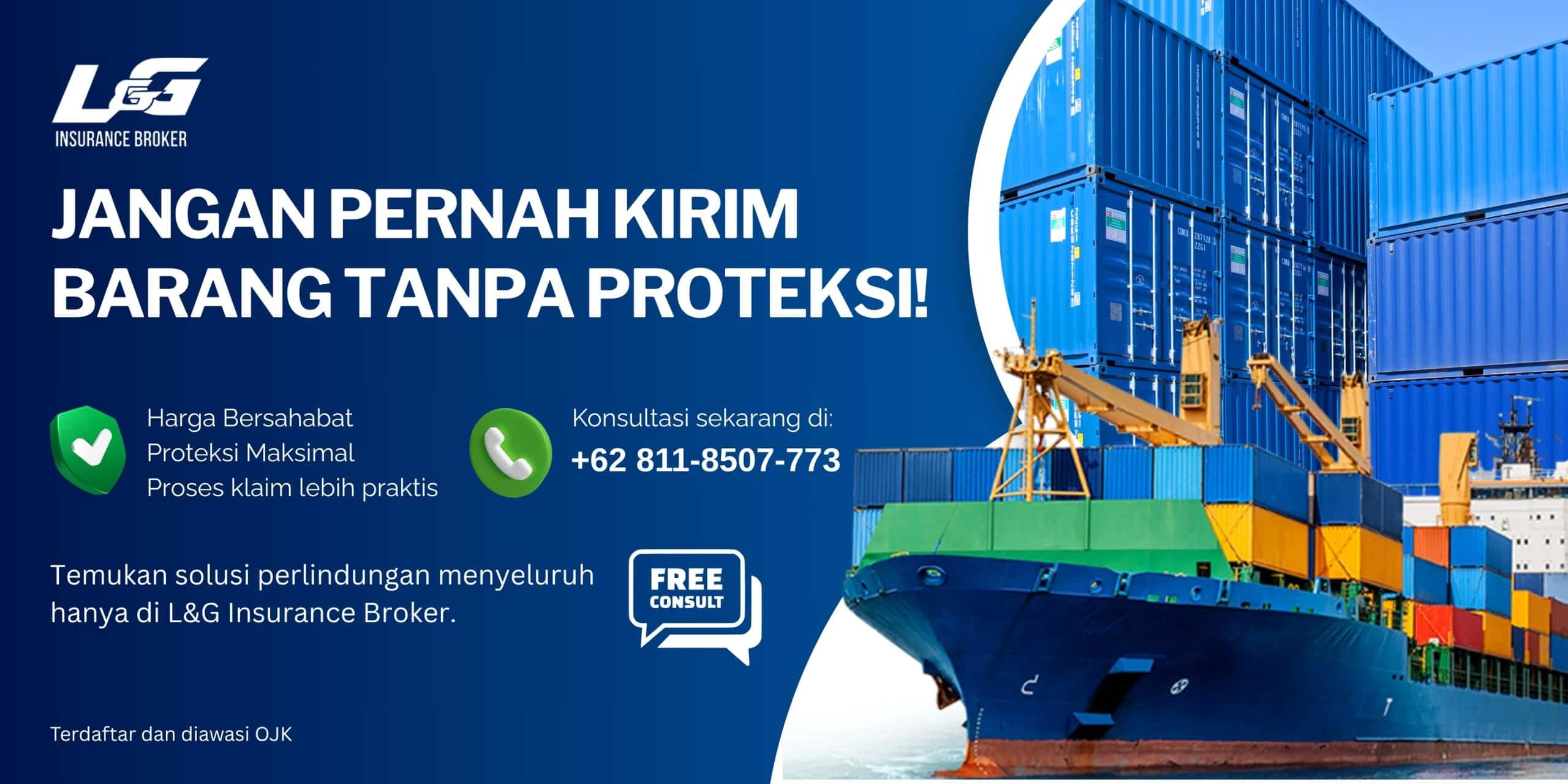Liga Asuransi – Dear risk takers, gold traders, forwarders, gold storage professionals, and all readers,
Welcome to our blog! As a senior insurance broker, I’m thrilled to embark on a journey with you into the world of risk management and insurance in the gold industry. Whether you’re navigating the complexities of gold trading, ensuring the safe transit of precious cargo, or safeguarding stored assets, we’re here to explore strategies and insights that matter to you.
Our goal is to provide valuable information and expert advice that can help you protect your investments and operations effectively. If you find our discussions useful, don’t hesitate to share them with your friends and colleagues who might benefit from our insights.
Let’s dive in together and uncover the opportunities and solutions that insurance can offer in managing risks across the dynamic landscape of the gold sector.
Gold trading, transit, and storage play pivotal roles in both global economies and Indonesia’s economic landscape. Globally, gold serves as a cornerstone of financial stability, valued for its intrinsic worth, and as a hedge against economic uncertainties. In international markets, gold is traded actively, with prices influenced by global economic trends, geopolitical events, and investor sentiment.
In Indonesia, gold holds cultural significance and is a crucial commodity in economic activities. The country’s rich mineral resources contribute to its status as a key player in the global gold market. Indonesian gold is mined extensively, particularly in regions like Papua and Sumatra, supporting local economies and international trade. The transit of gold within Indonesia and across borders involves logistical challenges and security considerations, reflecting the importance of robust infrastructure and regulatory frameworks. Storage facilities in Indonesia are critical for safeguarding gold, ensuring its integrity and value as it moves through various stages of production and distribution. Overall, gold trading, transit, and storage underscore Indonesia’s role in the global economy while navigating local and international dynamics.
Risks in Gold Trading
Gold trading involves various risks that impact traders and investors globally. Market volatility is a primary risk, as gold prices can fluctuate significantly due to economic data releases, geopolitical tensions, and shifts in investor sentiment. Counterparty risk is another concern, where counterparties may fail to fulfill contractual obligations, leading to financial losses. Regulatory risks vary across jurisdictions, affecting trading operations and compliance costs.
Operational risks encompass logistical challenges, such as transportation delays or disruptions, which can affect the timely delivery of gold. Technological risks include cybersecurity threats to trading platforms and data breaches that compromise sensitive information. Financial risks involve credit and liquidity issues, particularly in leveraged trading scenarios, where price movements can trigger margin calls or liquidation.
Successful gold trading requires comprehensive risk management strategies, including hedging techniques and insurance coverage against market downturns, operational disruptions, and legal liabilities.
Risks in Gold Transit
Gold transit poses several significant risks that impact its safe transport from mining sites to refineries or storage facilities. Physical security risks are prominent, including the threat of theft or robbery during transportation, especially in regions with inadequate security infrastructure. Environmental risks such as accidents or natural disasters can damage or destroy shipments, leading to financial losses.
Cross-border transit introduces additional challenges, such as customs regulations, political instability, and currency exchange risks. These factors can delay shipments or increase operational costs. Technological risks involve the potential for tracking and communication failures, which may compromise the ability to monitor and secure gold shipments effectively.
Risk mitigation strategies for gold transit typically include comprehensive security measures, such as armored transport vehicles and secure storage facilities. Insurance coverage plays a crucial role in protecting against financial losses from theft, damage, or other unforeseen events during transit, ensuring the integrity and safety of transported gold.
Risks in Gold Storage
Gold storage entails several risks that must be carefully managed to preserve the integrity and value of the stored gold. Physical security risks are paramount, encompassing threats like theft, burglary, or unauthorized access to storage facilities. Robust security measures, including surveillance systems and trained personnel, are essential to mitigate these risks.
Environmental risks pose another concern, as fluctuations in temperature and humidity can affect the quality and condition of stored gold over time. Storage facilities must maintain controlled environments to prevent degradation or corrosion of the metal.
Technological risks include failures in monitoring and tracking systems, potentially leading to gaps in inventory management or vulnerability to cyber-attacks. Such risks underscore the importance of investing in reliable technological infrastructure and cybersecurity measures.
Insurance coverage tailored for gold storage is critical, providing financial protection against physical losses, environmental damage, and technological vulnerabilities that could compromise stored gold’s value and integrity. Effective risk management strategies ensure that stored gold remains secure and preserved for its intended purposes.
Financial Risks in Gold Trading, Transit, and Storage
Financial risks in gold trading, transit, and storage encompass a range of challenges that affect stakeholders across the supply chain. In trading, market volatility presents a significant risk, with gold prices susceptible to fluctuations driven by economic data, geopolitical events, and investor sentiment. Traders leveraging positions face additional risks, such as margin calls and potential liquidation in volatile markets.
During transit, financial risks include currency exchange fluctuations and transaction costs, especially in cross-border shipments where varying exchange rates can impact profitability. Operational costs related to secure transportation and insurance premiums further affect financial outcomes.
In storage, financial risks arise from maintenance costs of secure facilities, insurance premiums against theft or damage, and the opportunity cost of holding gold rather than investing in other assets. Effective risk management strategies, including hedging against price fluctuations and comprehensive insurance coverage, are crucial to mitigate financial risks and ensure profitability throughout the gold trading, transit, and storage processes.
Legal and Regulatory Risks
Legal and regulatory risks in the gold industry span various jurisdictions and can significantly impact trading, transit, and storage activities. Compliance with local and international regulations is crucial, involving complex licensing requirements, environmental standards, and tax obligations that vary by region. Changes in regulations, such as mining laws or trade restrictions, can disrupt operations and increase compliance costs.
In trading, legal risks include contractual disputes, non-compliance with trading agreements, and regulatory scrutiny over market manipulation. Cross-border transit involves navigating customs regulations, import/export controls, and adherence to international trade agreements, which can lead to delays or additional costs if not managed properly.
Storage facilities must comply with safety regulations and insurance requirements to protect against legal liabilities arising from theft, environmental damage, or accidents. Legal expertise and proactive compliance measures are essential to navigate these risks and ensure adherence to evolving regulatory landscapes in the gold industry.
Operational Risks
Operational risks in the context of gold trading, transit, and storage encompass a wide range of challenges that can disrupt efficiency and impact profitability. In trading, operational risks include errors in order execution, technological failures on trading platforms, and operational disruptions due to market volatility or liquidity issues.
During transit, operational risks involve logistical challenges such as transportation delays, accidents, or damage to shipments. Poor infrastructure or inadequate security measures can further exacerbate these risks, jeopardizing the timely and secure delivery of gold.
In storage, operational risks include maintenance issues with storage facilities, such as power outages or structural failures, which can compromise the safety and integrity of stored gold. Effective risk management strategies in operations involve implementing robust contingency plans, investing in reliable infrastructure and technology, and maintaining strict adherence to safety protocols to mitigate these risks and ensure smooth operations across all stages of the gold supply chain.
Technological Risks
Technological risks in the gold industry encompass vulnerabilities that can impact trading, transit, and storage operations. In trading, reliance on digital platforms introduces cybersecurity risks such as data breaches, unauthorized access, or denial-of-service attacks. These threats can compromise sensitive trading information and disrupt market activities.
During transit, technological risks include failures in tracking and monitoring systems, which are essential for ensuring the security and visibility of gold shipments. Technical glitches or communication breakdowns may lead to delays in transit schedules or loss of real-time shipment data, affecting operational efficiency and security.
In storage, technological risks involve failures in security systems, such as surveillance cameras or alarm systems, which are critical for safeguarding stored gold against theft or unauthorized access. Robust cybersecurity measures, regular system audits, and investment in reliable technological infrastructure are essential to mitigate these risks and maintain the integrity and security of gold throughout its lifecycle.
Risk Management Strategies
Risk management strategies in the gold industry aim to identify, assess, and mitigate various risks associated with trading, transit, and storage operations. In trading, strategies include hedging against price fluctuations using futures contracts or options to offset potential losses from adverse market movements. Diversifying portfolios and using stop-loss orders help manage investment risks.
During transit, risk management strategies involve securing reliable transportation services, implementing robust security protocols, and obtaining comprehensive insurance coverage to protect against physical theft, accidents, or environmental hazards. Conducting thorough risk assessments and contingency planning are crucial to address logistical challenges and ensure the safe and timely delivery of gold shipments.
In storage, strategies include maintaining secure facilities with advanced security systems, regular audits, and adherence to best practices in environmental and safety standards. Insurance policies tailored to cover physical risks, cybersecurity threats, and regulatory compliance issues further strengthen risk management frameworks in gold storage operations.
Types of insurance for gold trading, transit, and storage
Insurance plays a critical role in mitigating risks associated with gold trading, transit, and storage, offering financial protection against potential losses.
For gold trading, insurance products include:
- Price Risk Insurance:
Covers losses due to price fluctuations in gold markets, allowing traders to hedge against market volatility.
- Counterparty Risk Insurance:
Protects against financial losses if a trading partner defaults on contractual obligations.
Covers legal liabilities arising from trading activities, such as errors or omissions in trading decisions.
During gold transit, insurance options include:
Covers physical loss or damage to gold shipments during transit, including theft, accidents, or natural disasters.
- Transit Insurance:
Protects against financial losses from delays or interruptions in transit, ensuring compensation for additional costs incurred.
- Customs Bond Insurance:
Facilitates compliance with customs regulations and covers financial penalties or duties associated with cross-border shipments.
For gold storage, insurance products include:
- Storage Facility Insurance:
Covers risks related to physical security, such as theft, fire, or environmental hazards affecting stored gold.
- Cyber Insurance:
Protects against cyber threats and data breaches that could compromise the security of stored gold information.
- Environmental Liability Insurance:
Covers liabilities from environmental damage caused by stored gold, ensuring compliance with environmental regulations.
These insurance types provide comprehensive coverage tailored to the specific risks encountered during gold trading, transit, and storage, helping stakeholders manage uncertainties and safeguard their financial interests effectively.
The role of the insurance broker
An insurance broker plays a pivotal role as an intermediary between insurance companies (insurers) and insurance buyers (clients). Their primary function is to help clients assess their insurance needs, find suitable insurance policies from various insurers, and facilitate the purchase of insurance coverage that best meets the client’s requirements.
Here are the key roles and responsibilities of an insurance broker:
Assessment of Insurance Needs:
Brokers work closely with clients to understand their specific risks and insurance requirements. They assess factors such as industry risks, business operations, and financial exposures to determine the appropriate types and levels of insurance coverage needed.
Market Research and Comparison:
Brokers have access to a wide range of insurance products offered by different insurers. They conduct market research, compare policies, and provide clients with options from multiple insurers to ensure they get comprehensive coverage at competitive rates.
Negotiation with Insurers:
Brokers leverage their industry knowledge and relationships with insurers to negotiate favorable terms and conditions on behalf of their clients. This includes negotiating premiums, coverage limits, deductibles, and policy terms that align with the client’s risk management strategies.
Policy Placement:
Once a suitable insurance policy is selected, brokers assist in completing the necessary paperwork and facilitate the placement of the policy with the chosen insurer. They ensure that all legal and regulatory requirements are met during the policy issuance process.
Claims Assistance:
In the event of a claim, brokers act as advocates for their clients. They help clients understand the claims process, gather required documentation, and liaise with the insurer to expedite claims settlement. Brokers strive to ensure that their clients receive fair and timely compensation for covered losses.
Risk Management Advice:
Beyond insurance placement, brokers provide ongoing risk management advice and support to clients. They help identify and mitigate risks through proactive risk assessment, loss prevention strategies, and recommendations for additional coverage or policy adjustments as business needs evolve.
Overall, insurance brokers play a crucial role in the insurance industry by providing expert advice, personalized service, and advocacy for clients, ensuring they have the right insurance protection to safeguard their assets and operations effectively.
Why use L&G Insurance Broker in Indonesia?
In Indonesia, L&G Insurance Broker is a preferred choice for several reasons:
Expertise and Experience:
L&G Insurance Broker has extensive experience and expertise in the Indonesian insurance market. They understand the local regulatory landscape, industry nuances, and specific risks that businesses face in Indonesia.
Tailored Solutions:
L&G Insurance Broker offers customized insurance solutions tailored to the unique needs of businesses operating in Indonesia. Whether it’s for large-scale infrastructure projects, industrial operations, or commercial enterprises, they provide personalized advice and comprehensive coverage options.
Strong Industry Relationships:
L&G Insurance Broker has established strong relationships with reputable insurance companies in Indonesia. This allows them to negotiate competitive premiums, and favorable policy terms, and ensure prompt claims processing for their clients.
Risk Management Excellence:
Beyond insurance placement, L&G Insurance Broker excels in risk management. They provide proactive risk assessment, mitigation strategies, and ongoing support to help businesses minimize risks and enhance their overall risk management practices.
Client-Centric Approach:
L&G Insurance Broker prioritizes client satisfaction and service excellence. They offer responsive customer service, dedicated account management, and advocacy during claims processes, ensuring that clients receive prompt assistance and effective solutions.
Comprehensive Service Portfolio:
Whether it’s for property and casualty insurance, liability coverage, employee benefits, or specialty insurance needs, L&G Insurance Broker offers a wide range of insurance products to meet diverse business requirements in Indonesia.
Overall, businesses choose L&G Insurance Broker in Indonesia for their reliability, expertise, tailored solutions, and commitment to delivering value-added services that protect and support their clients’ business interests effectively.
For all your insurance needs, Call L&G now!
—
MARINE CARGO INSURANCE FOR GOLD SHIPMENT WILL BE SAFER WITH US – DON’T WASTE YOUR TIME AND CALL US NOW
24 JAM L&G HOTLINE: 0811-8507-773 (CALL – WHATSAPP – SMS)
website: lngrisk.co.id
Email: customer.support@lngrisk.co.id
—









![[RECAP WEBINAR: Peran Penting Jaminan Asuransi Marine Cargo]
Dalam dunia ekspor-impor, risiko bisa terjadi kapan saja, mulai dari proses pemuatan, perjalanan laut, hingga barang tiba di pelabuhan tujuan. Kerusakan, kehilangan, bahkan keterlambatan bisa menimbulkan kerugian besar jika tidak dilindungi dengan asuransi yang tepat.
Webinar ini membahas secara mendalam:
✅ Risiko utama dalam pengiriman barang via laut
✅ Jenis-jenis perlindungan Marine Cargo Insurance yang wajib diketahui eksportir
✅ Peran strategis broker asuransi dalam memastikan klaim berjalan lancar
Dengan perlindungan yang tepat, bisnis Anda tetap aman di tengah ketidakpastian perjalanan laut.
📣 Jangan lewatkan webinar edukatif berikutnya dari L&G Insurance Broker untuk memperluas wawasan Anda tentang manajemen risiko logistik dan perdagangan internasional!
Follow akun kami dan aktifkan notifikasi agar tidak ketinggalan.
#MarineCargo #AsuransiPengiriman #ExportImport #ShippingRisk #BrokerAsuransi #LogisticsProtection #RiskManagement #AmanBersamaLnG #DontShipWithoutProtection](https://scontent-yyz1-1.cdninstagram.com/v/t51.82787-15/572598319_18403812796184229_8258002272312062120_n.jpg?stp=dst-jpg_e35_tt6&_nc_cat=102&ccb=1-7&_nc_sid=18de74&efg=eyJlZmdfdGFnIjoiQ0FST1VTRUxfSVRFTS5iZXN0X2ltYWdlX3VybGdlbi5DMyJ9&_nc_ohc=l4h-v8Vgl3QQ7kNvwHvaw4C&_nc_oc=Adm-WngHbbzApxWsJjroyCaPXfIyTWAndoyvGH8UlcGDkemW35UIA3S9dL-P7Wb1KWrqVSP9atULbSV-jr5_1C8C&_nc_zt=23&_nc_ht=scontent-yyz1-1.cdninstagram.com&edm=ANo9K5cEAAAA&_nc_gid=FFNONQXPR7GqJ4RcUOWiJQ&oh=00_AfiDZfHmdHzPAfN7bQ358obFQOU8AWcVZtKljiNbTQTKUg&oe=690EF7D1)











